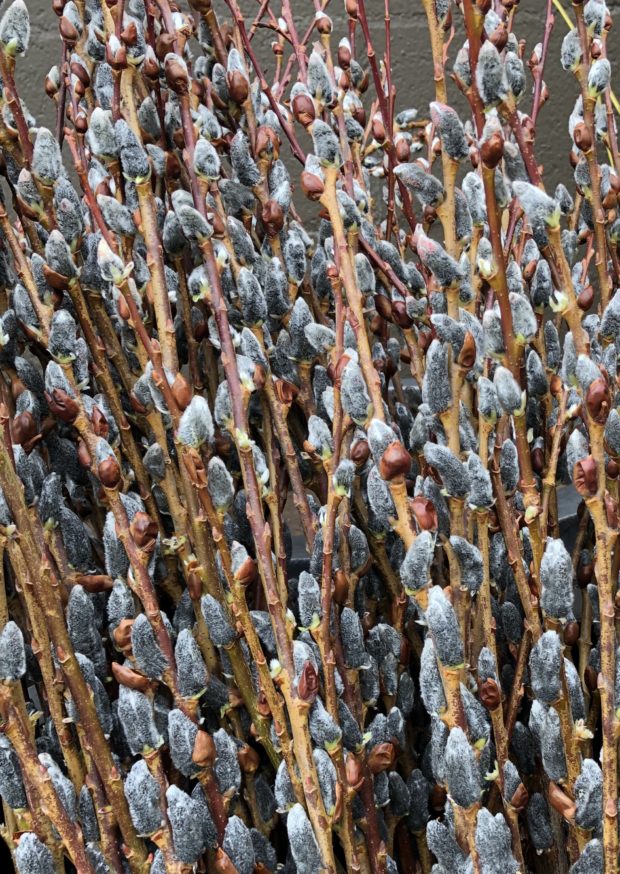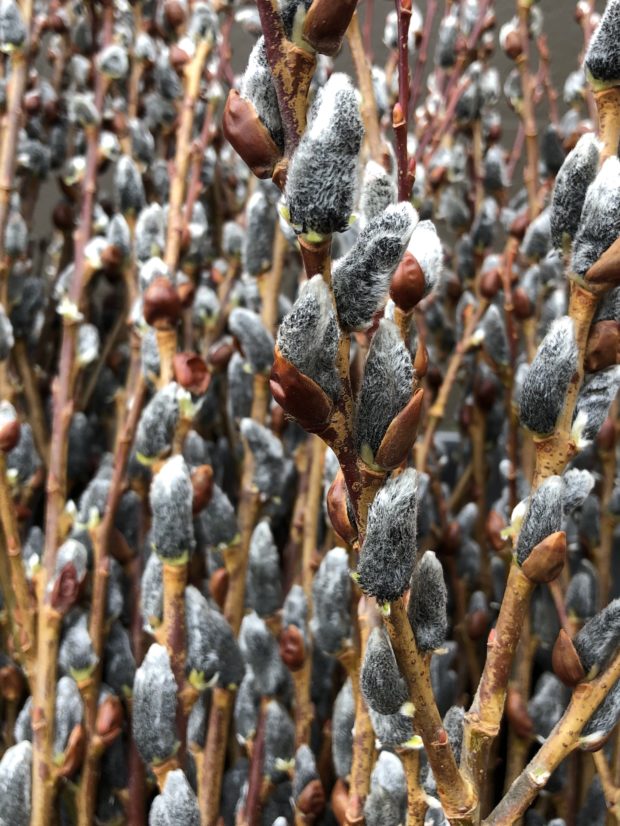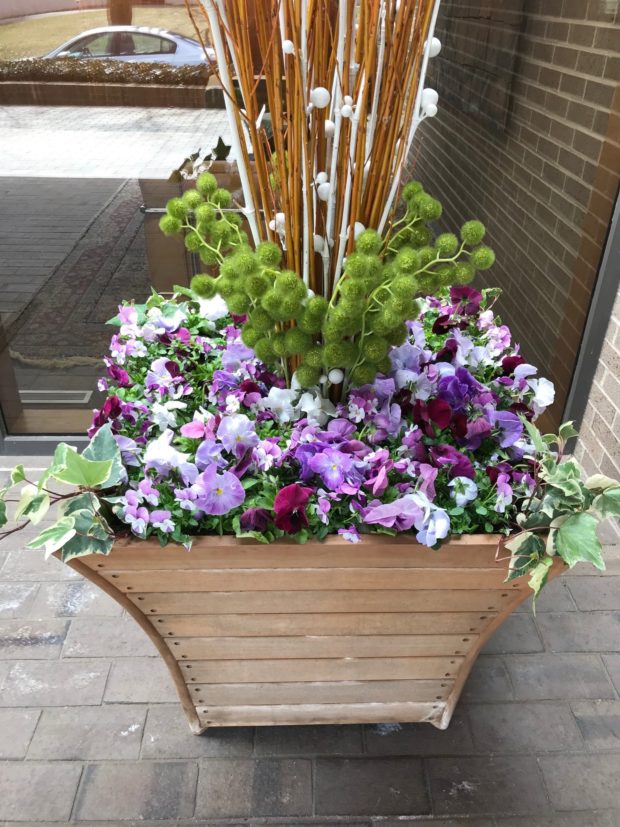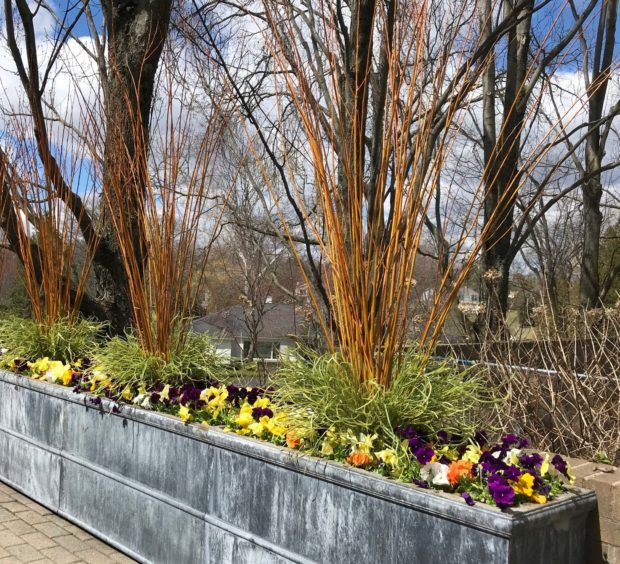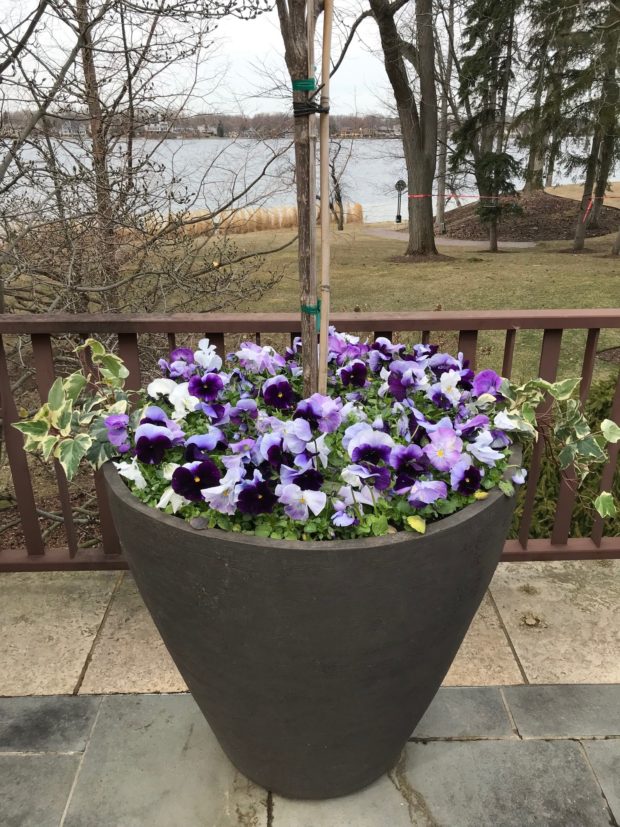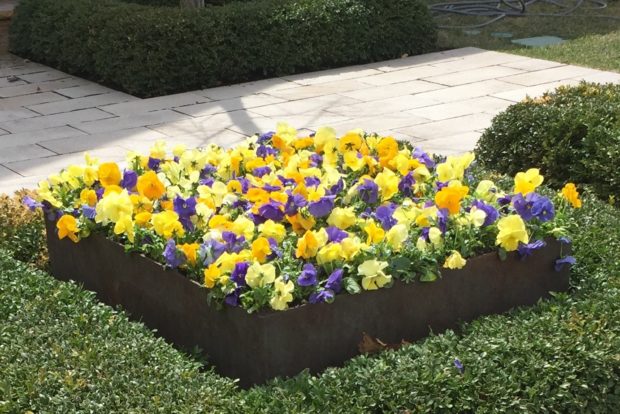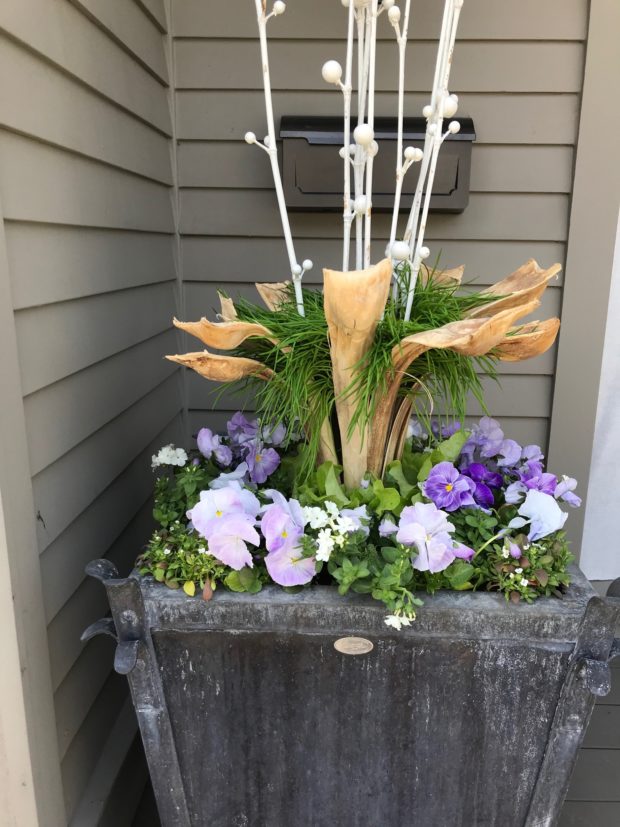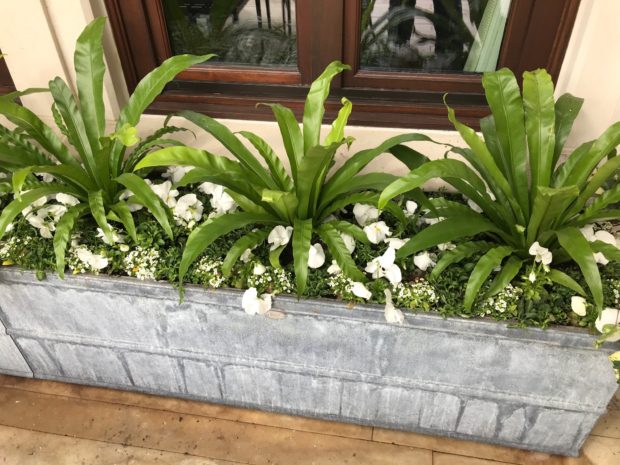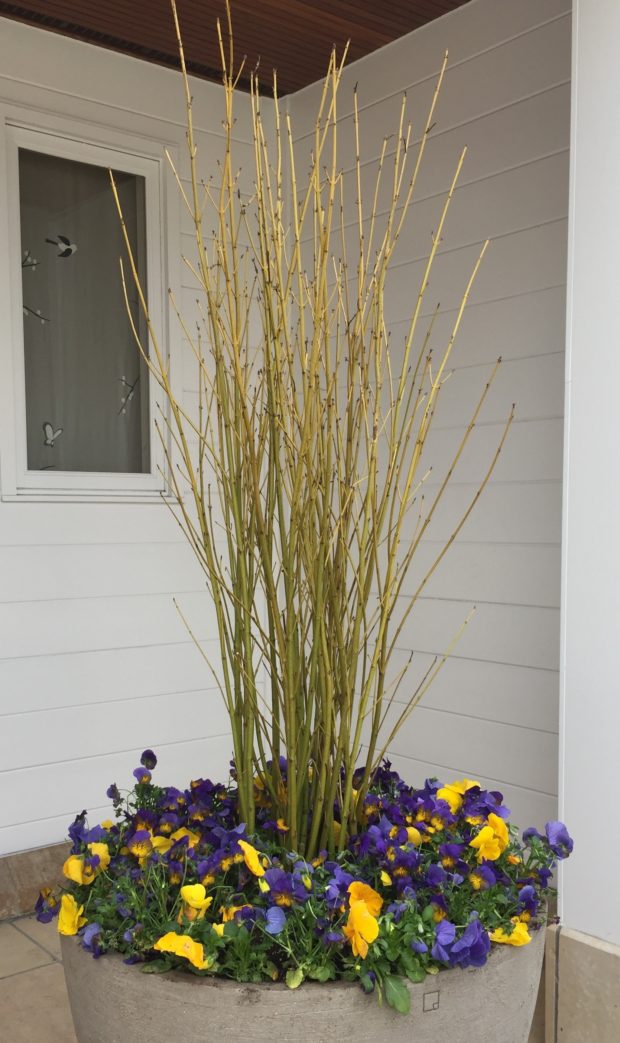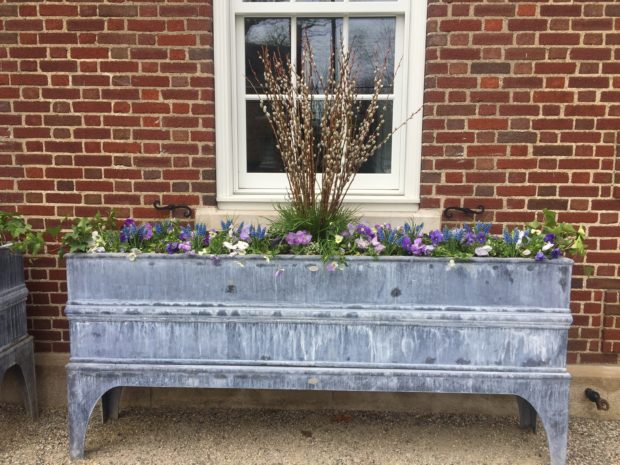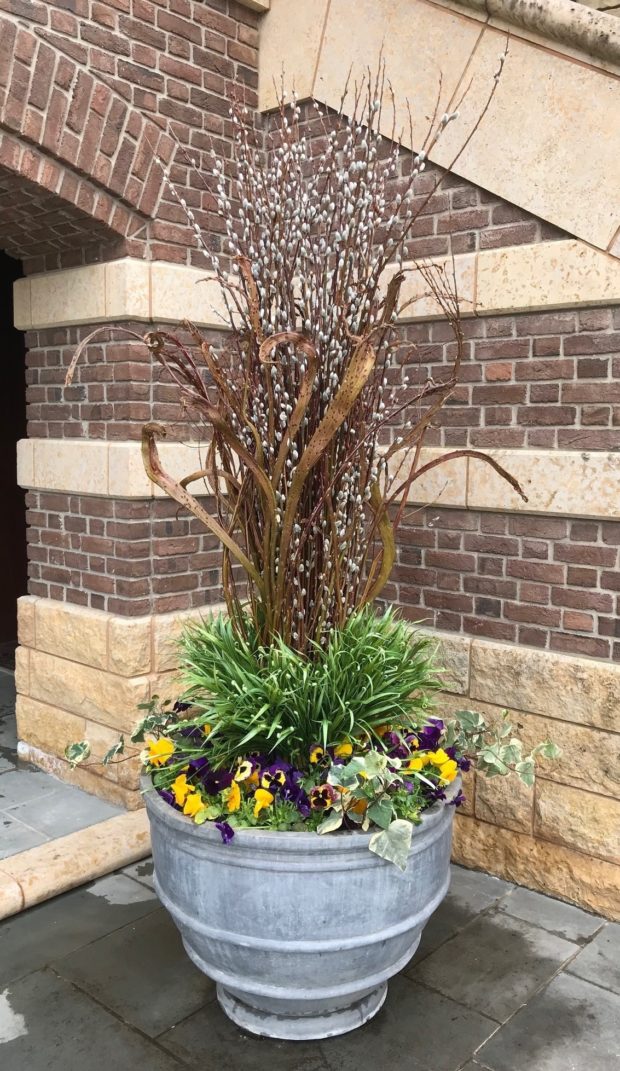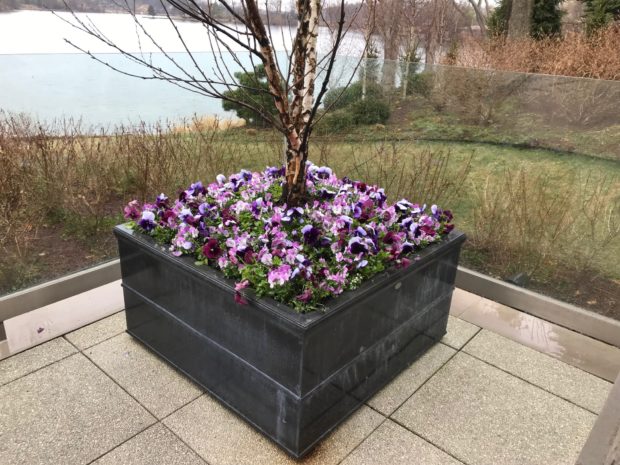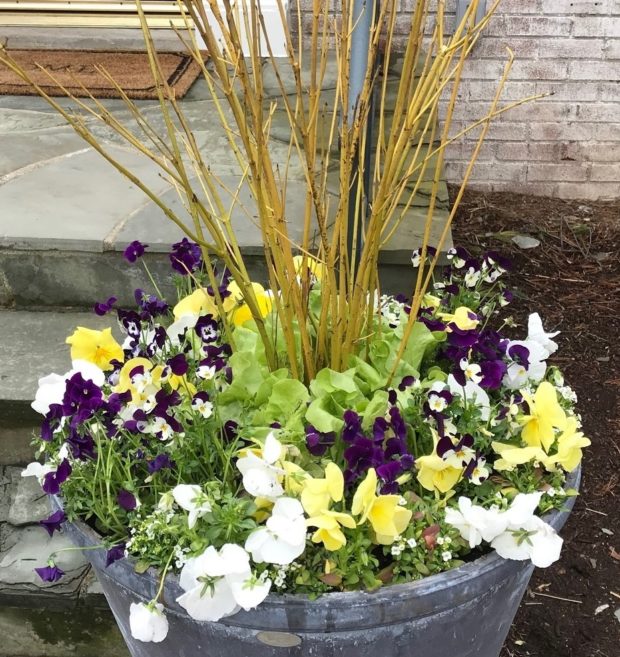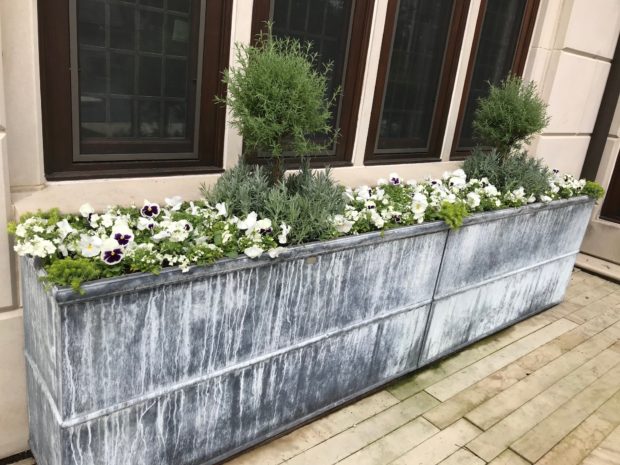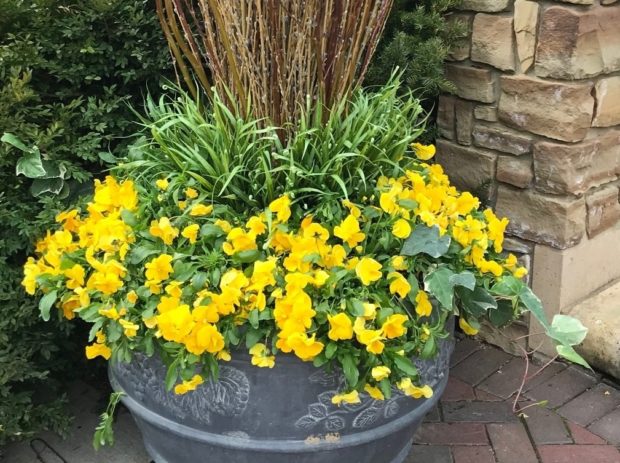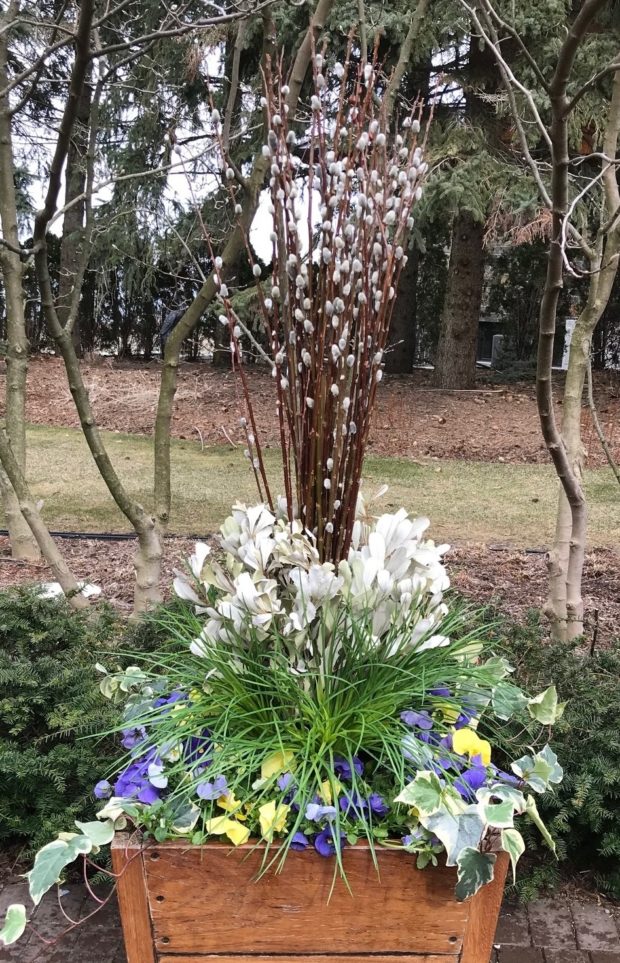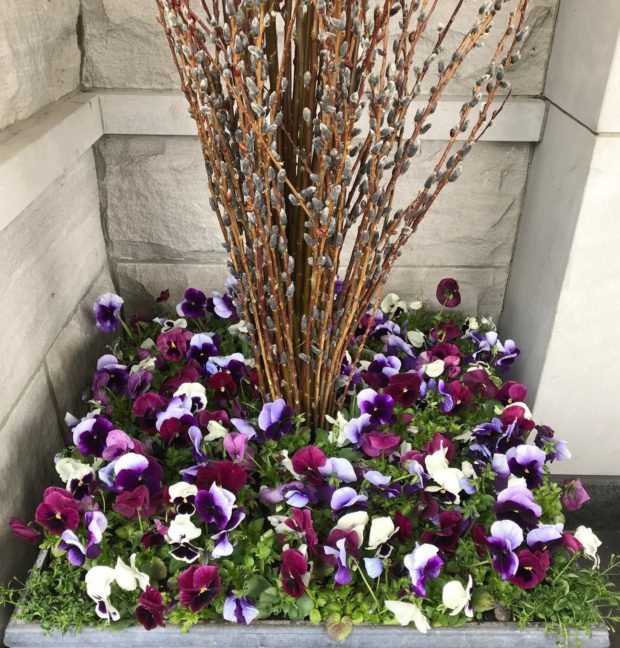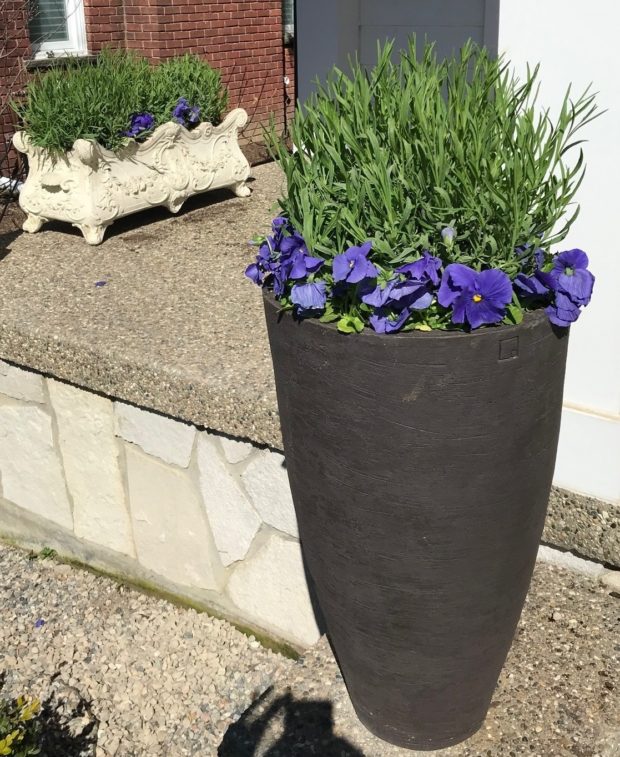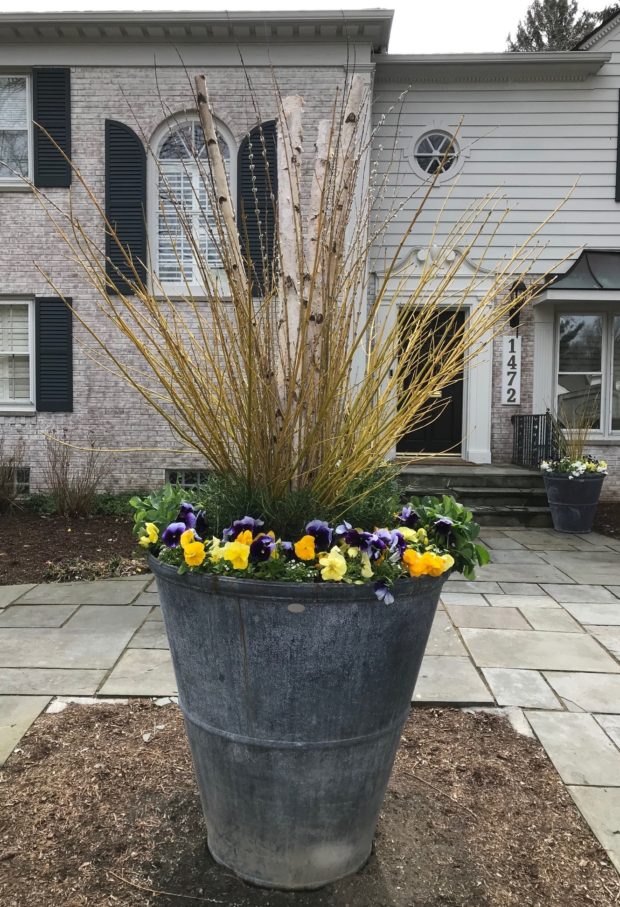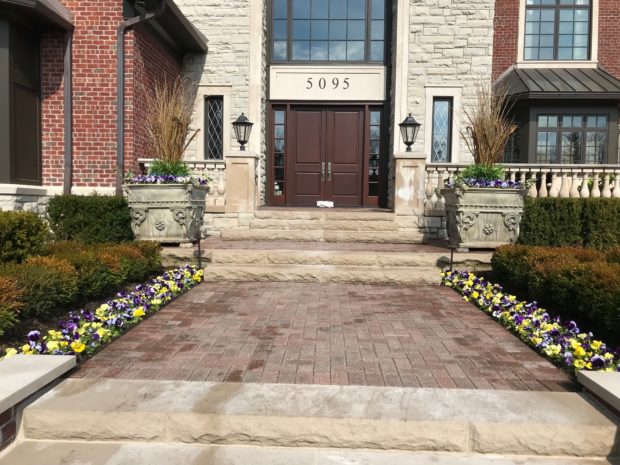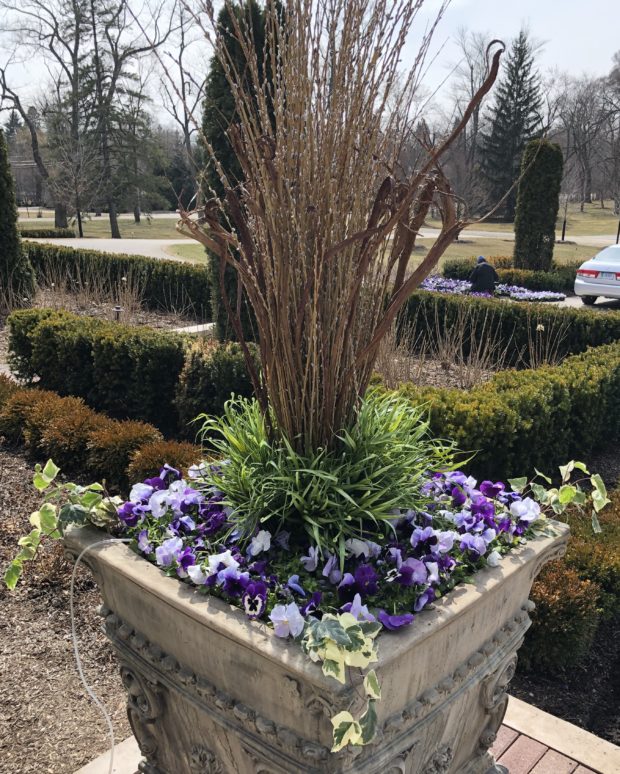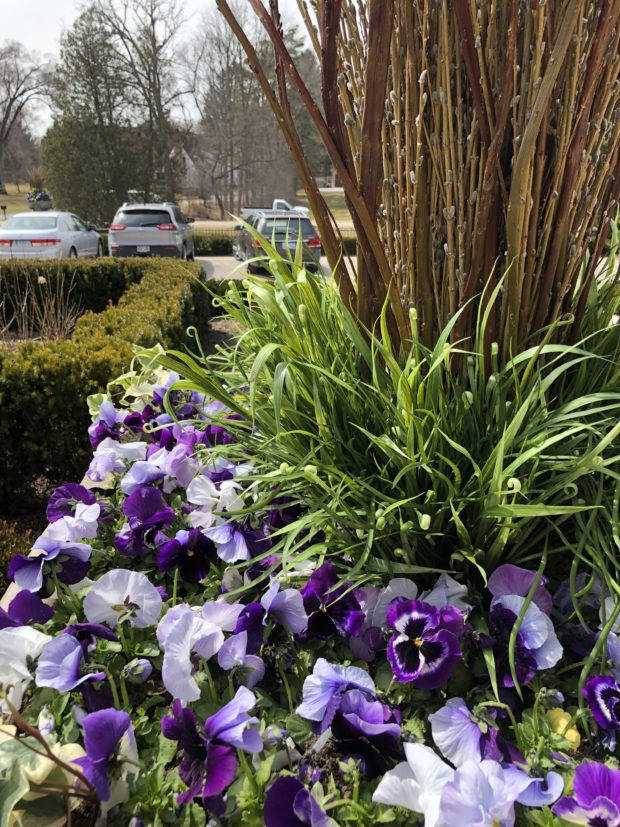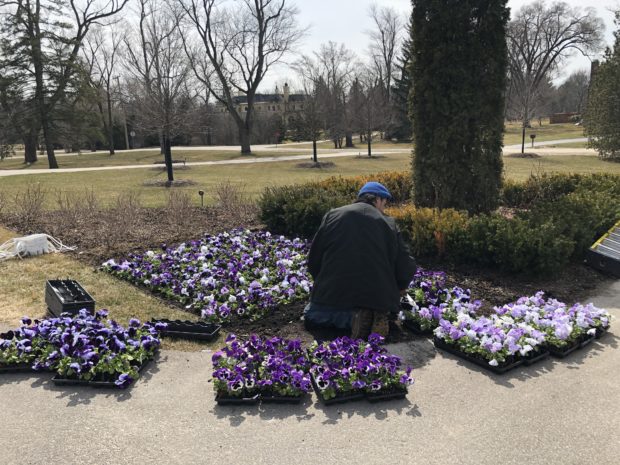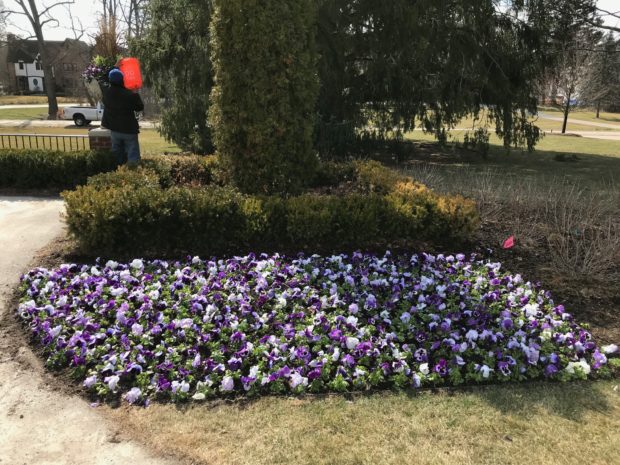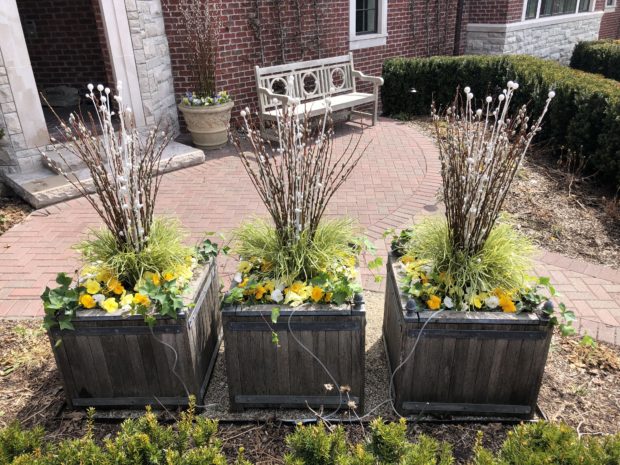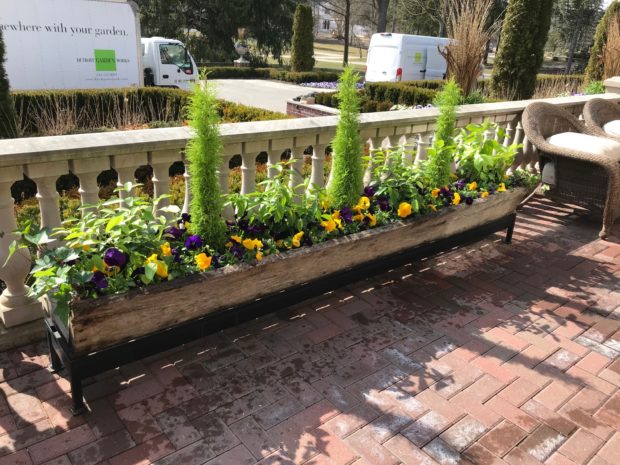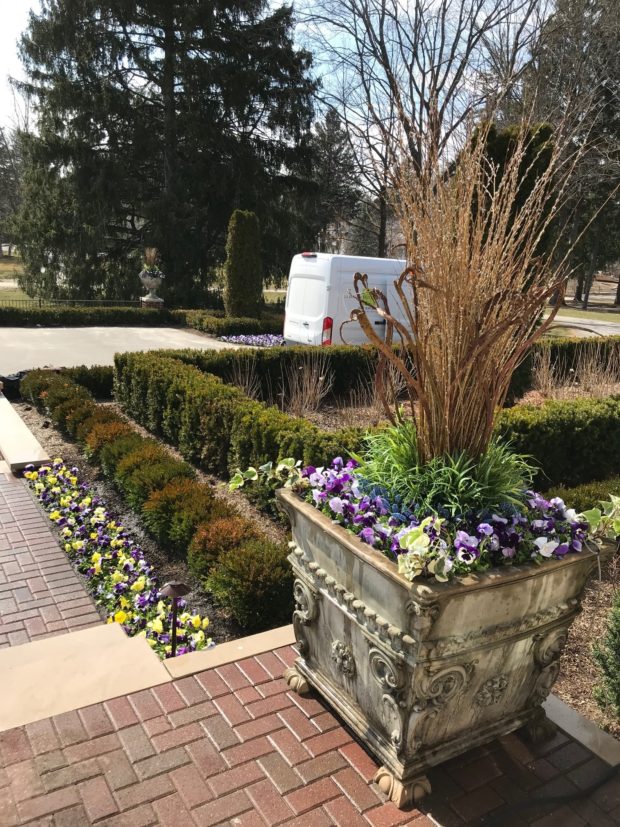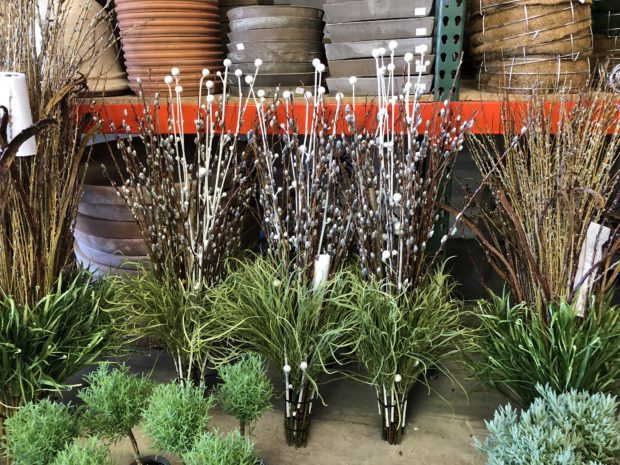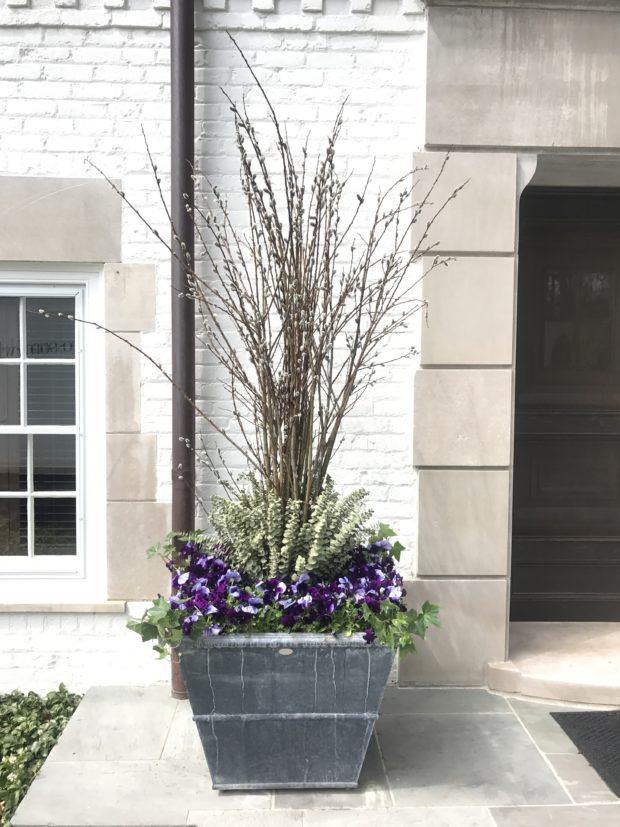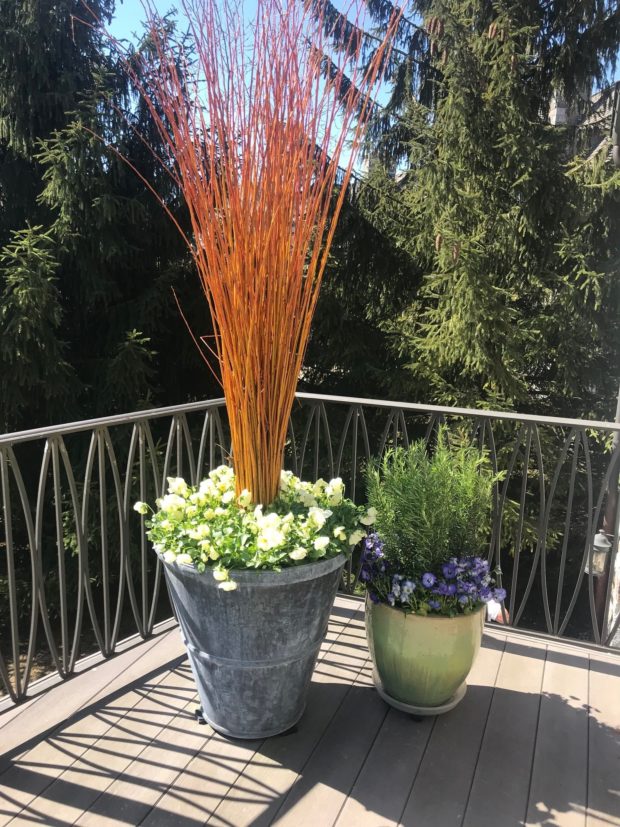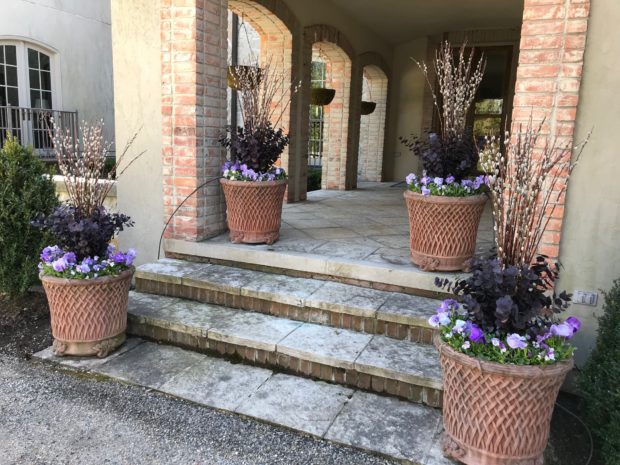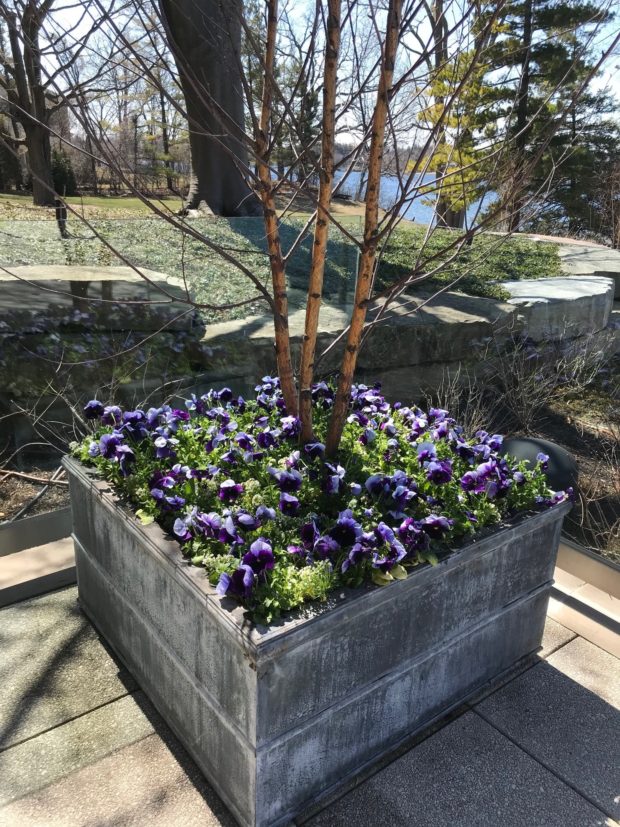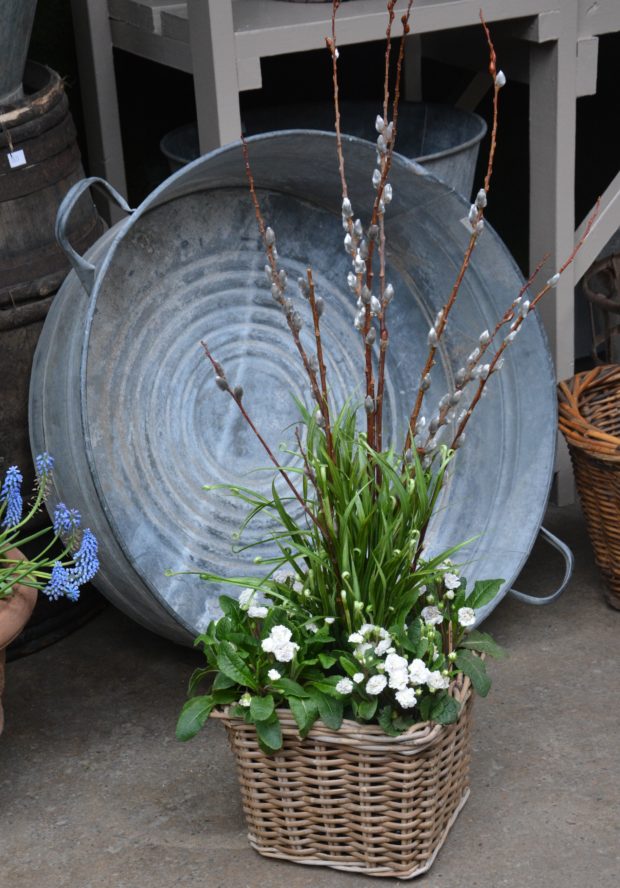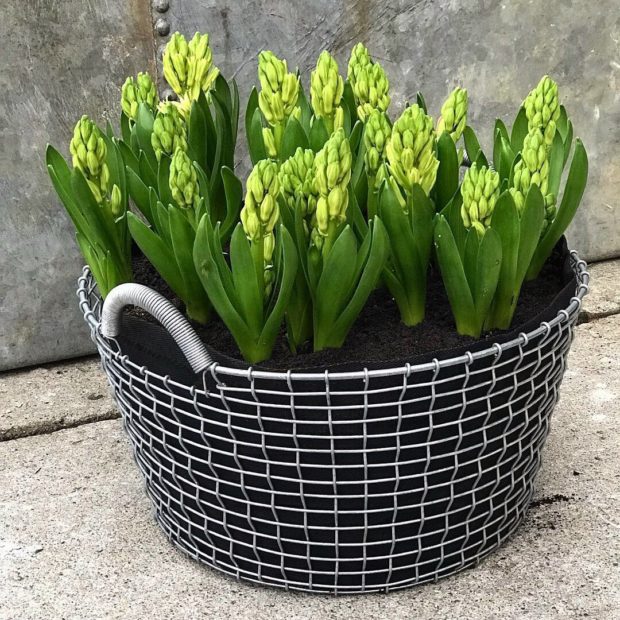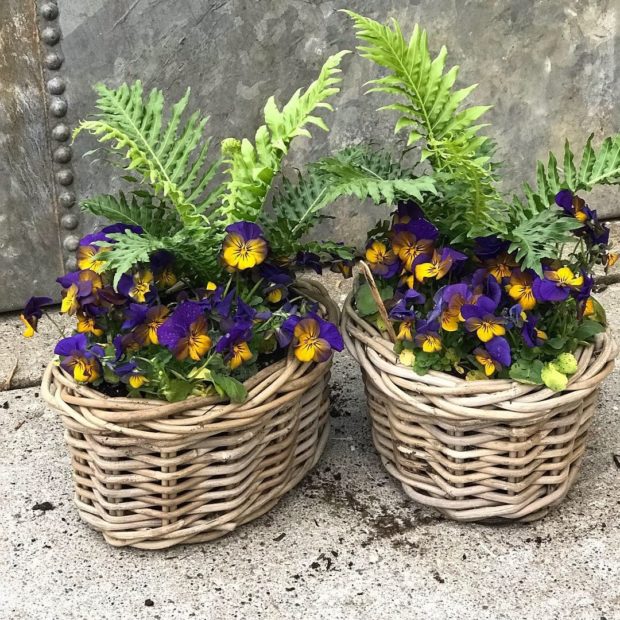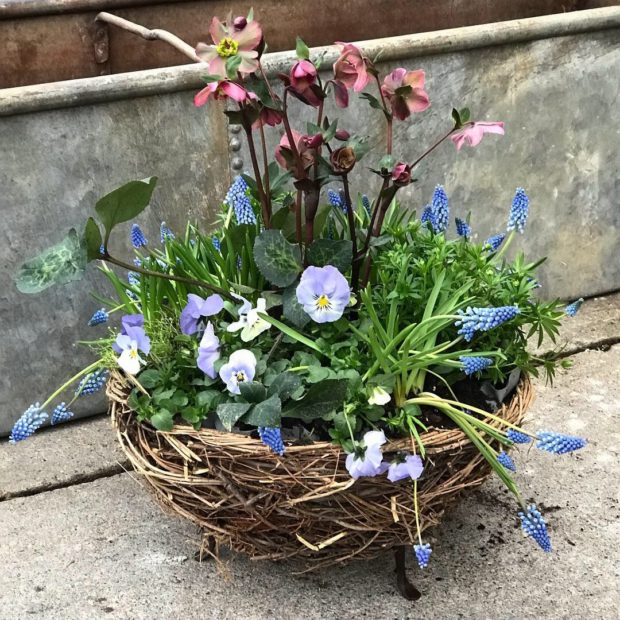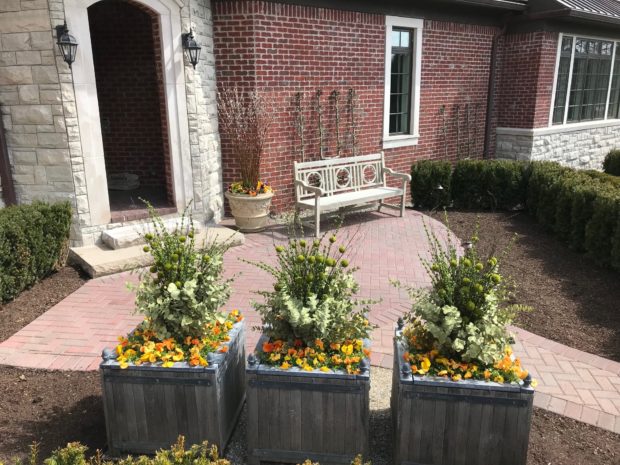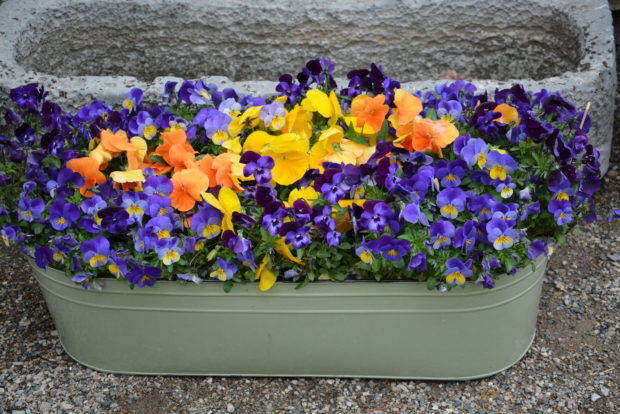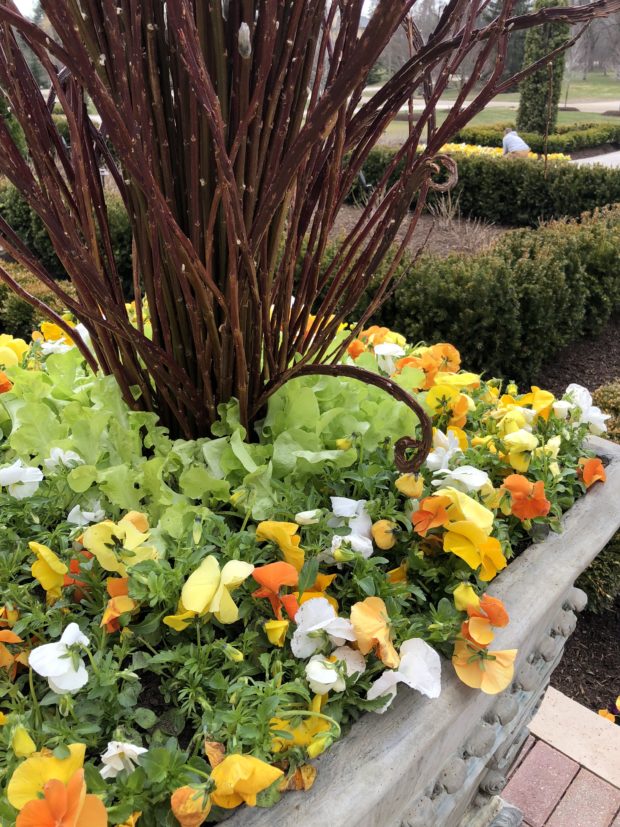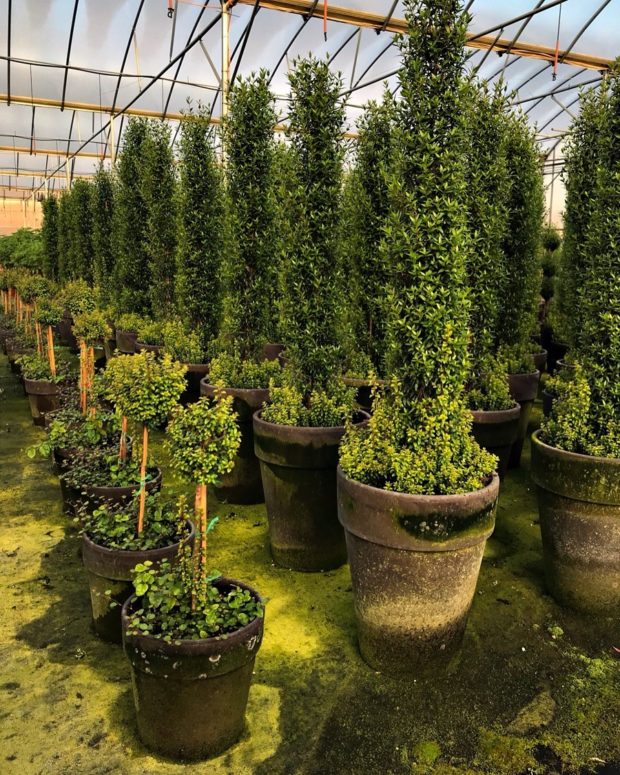 The demand for landscape design and installation has been one after the other this spring. I am sure you can tell, given how few and far between my posts have been of late. Our persistently chilly weather has given way to some gardening friendly weather. Suddenly, the summer container planting season is here, and my board is chock full of projects that will need doing beautifully, and with dispatch. The summer plantings begin later in May, and finish up in late June. Late June? The spring plantings are just beginning to come in to their own now. Clients with spring plantings are not in a rush to plant seasonal tropicals. Given that tropical plants dislike cold temperatures, and hate cold soil, a spring planting can stave off that urge to plant summer containers too early.
The demand for landscape design and installation has been one after the other this spring. I am sure you can tell, given how few and far between my posts have been of late. Our persistently chilly weather has given way to some gardening friendly weather. Suddenly, the summer container planting season is here, and my board is chock full of projects that will need doing beautifully, and with dispatch. The summer plantings begin later in May, and finish up in late June. Late June? The spring plantings are just beginning to come in to their own now. Clients with spring plantings are not in a rush to plant seasonal tropicals. Given that tropical plants dislike cold temperatures, and hate cold soil, a spring planting can stave off that urge to plant summer containers too early.
 Of special interest to me is the unique role played by containers in the landscape. No news here,should you be familiar with Detroit Garden Works. For 23 years now, the shop has been a premier source for great ornament for the garden. I am happy to say that our reputation in recent years has become a a national phenomenon. Jackie deals with clients all over the country, and manages a steady stream of shipments going out. The shop website is good, and easy to navigate. Jenny keeps it fresh and lively.
Of special interest to me is the unique role played by containers in the landscape. No news here,should you be familiar with Detroit Garden Works. For 23 years now, the shop has been a premier source for great ornament for the garden. I am happy to say that our reputation in recent years has become a a national phenomenon. Jackie deals with clients all over the country, and manages a steady stream of shipments going out. The shop website is good, and easy to navigate. Jenny keeps it fresh and lively.
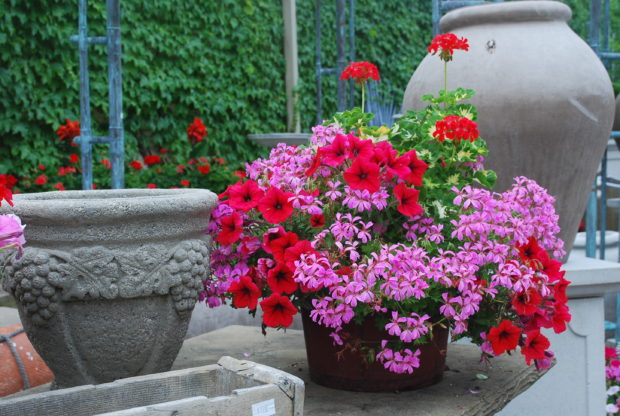 Of course the lion’s share of our focus is on containers of every conceivable period and style. Vintage dolly tubs and new locust wood casks belted with galvanized steel rub elbows with a select collection of European and American antique urns. Of course the choice of a container is a significant factor in container planting. It is as much an important part of the container arrangement as the plants. That empty container represents the opportunity to throw a party in celebration of summer. The limited square footage imposed by the edges of a container means the design idea has to be simple. And it has to be visually strong.The plants need to be companionable, or at least tolerant of one another. Container plantings at war with nature make me uneasy. Given the almost limitless number of plants that can thrive in a container, it would take several gardening lifetimes to even make a dent in all of the possibilities.
Of course the lion’s share of our focus is on containers of every conceivable period and style. Vintage dolly tubs and new locust wood casks belted with galvanized steel rub elbows with a select collection of European and American antique urns. Of course the choice of a container is a significant factor in container planting. It is as much an important part of the container arrangement as the plants. That empty container represents the opportunity to throw a party in celebration of summer. The limited square footage imposed by the edges of a container means the design idea has to be simple. And it has to be visually strong.The plants need to be companionable, or at least tolerant of one another. Container plantings at war with nature make me uneasy. Given the almost limitless number of plants that can thrive in a container, it would take several gardening lifetimes to even make a dent in all of the possibilities.
 A container planting matures in but a few months. What a pleasure to be able to watch that process. Mercifully, it all comes to an end with a hard frost. One can abandon a scheme that disappointed. Or explore a new idea come the new season. A collection of containers is a visual diary of what is on a gardener’s mind at that moment. A landscape and garden involves a long term commitment. There is strategy and planning involved. Decisions that are made one year are not so easy to change years later. An old tree that succumbs to an illness or bugs can make for chaos in the garden below. Growing a landscape on can feel like a full time job. The blooming of the double bloodroot, dogwoods, lilacs and peonies are ephemeral, but the gardener gets to enjoy them year after year, barring a disaster. A collection of containers set within that landscape keeps the garden dialogue fresh and interesting.
A container planting matures in but a few months. What a pleasure to be able to watch that process. Mercifully, it all comes to an end with a hard frost. One can abandon a scheme that disappointed. Or explore a new idea come the new season. A collection of containers is a visual diary of what is on a gardener’s mind at that moment. A landscape and garden involves a long term commitment. There is strategy and planning involved. Decisions that are made one year are not so easy to change years later. An old tree that succumbs to an illness or bugs can make for chaos in the garden below. Growing a landscape on can feel like a full time job. The blooming of the double bloodroot, dogwoods, lilacs and peonies are ephemeral, but the gardener gets to enjoy them year after year, barring a disaster. A collection of containers set within that landscape keeps the garden dialogue fresh and interesting.
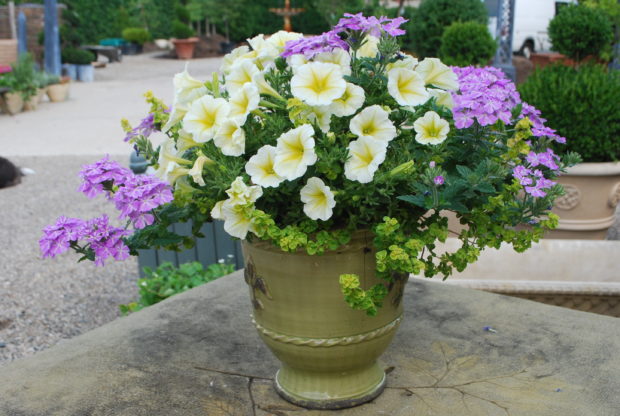 Containers do not need to be large to be good. I still like this planting, 10 years after the fact. I like the color of the gold marjoram complements the color of the glaze. The lavender star trailing verbena is a lively contrast to the yellow petunias. The overall shape is relaxed, and proportional to the container. Small containers ask for small growing plants.
Containers do not need to be large to be good. I still like this planting, 10 years after the fact. I like the color of the gold marjoram complements the color of the glaze. The lavender star trailing verbena is a lively contrast to the yellow petunias. The overall shape is relaxed, and proportional to the container. Small containers ask for small growing plants.
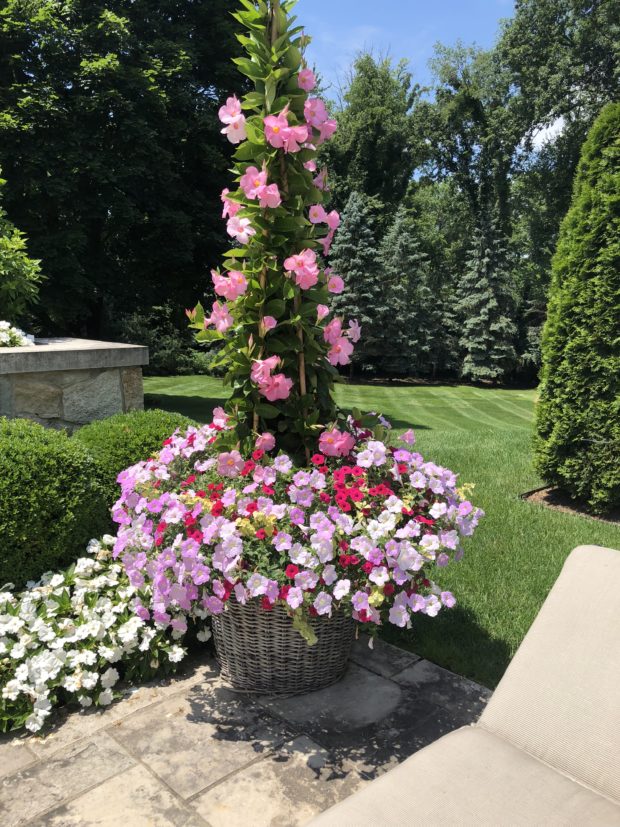 Hot sunny places are the perfect location for seasonal plants. The profuse bloom on these petunias and mandevillea speaks to those conditions. Seasonal tropical plants are a way to have flowers every day all season long. The plastic liner in this wicker basket helps to keep the wicker from deteriorating from constant exposure to moisture. And that plastic means a basket this size will not require watering every day in the heat of the summer.
Hot sunny places are the perfect location for seasonal plants. The profuse bloom on these petunias and mandevillea speaks to those conditions. Seasonal tropical plants are a way to have flowers every day all season long. The plastic liner in this wicker basket helps to keep the wicker from deteriorating from constant exposure to moisture. And that plastic means a basket this size will not require watering every day in the heat of the summer.
 Double white petunias are leggy, and those legs are not so attractive. Pairing them with euphorbia Diamond Frost disguises that unfortunate trait, and holds up those heavy double flower heads. The datura provides a contrasting texture both in leaf and flower.
Double white petunias are leggy, and those legs are not so attractive. Pairing them with euphorbia Diamond Frost disguises that unfortunate trait, and holds up those heavy double flower heads. The datura provides a contrasting texture both in leaf and flower.
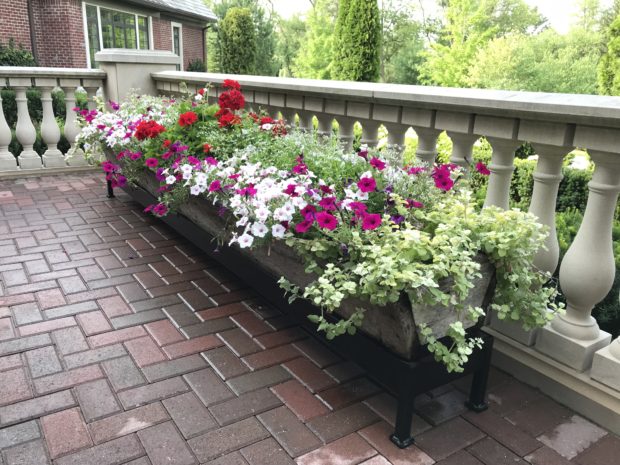 This wooden trough features a large collection of different plants, all arranged in a very informal way. Insouciant in feeling, this.
This wooden trough features a large collection of different plants, all arranged in a very informal way. Insouciant in feeling, this.
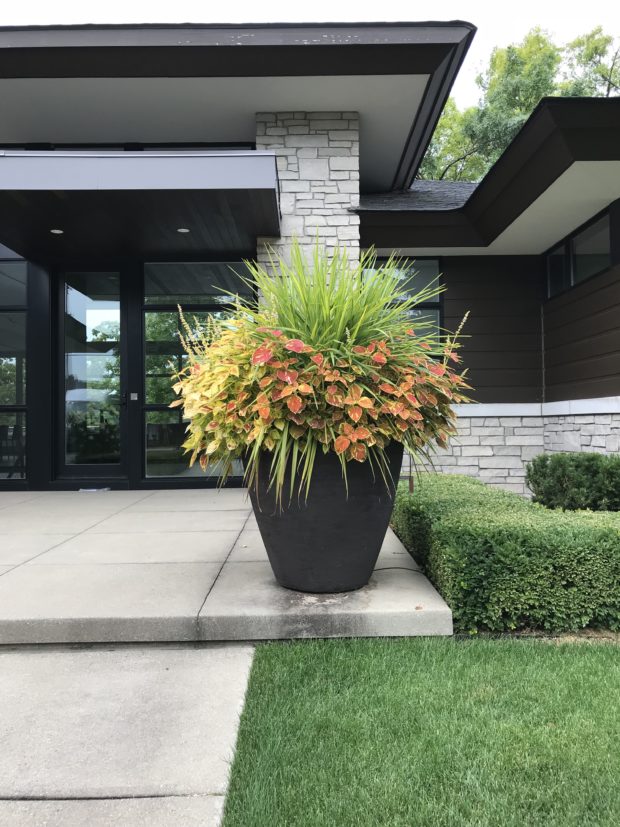 Any container planting can be endowed with a contemporary feeling-the design plays a major role in that.
Any container planting can be endowed with a contemporary feeling-the design plays a major role in that.
 Lush and lavish by summer’s end speaks to months of consistent maintenance. For those whose life means picking up a hose comes last, an irrigation contractor can install watering lines that can buy you some time. If the need for low maintenance is a deterrent to planting, many tropical plants don’t need dead heading, staking or frequent water. A clear understanding of what kind of gardener you are can inform the plant selection process. The big idea is to enjoy the process as much as the results.
Lush and lavish by summer’s end speaks to months of consistent maintenance. For those whose life means picking up a hose comes last, an irrigation contractor can install watering lines that can buy you some time. If the need for low maintenance is a deterrent to planting, many tropical plants don’t need dead heading, staking or frequent water. A clear understanding of what kind of gardener you are can inform the plant selection process. The big idea is to enjoy the process as much as the results.
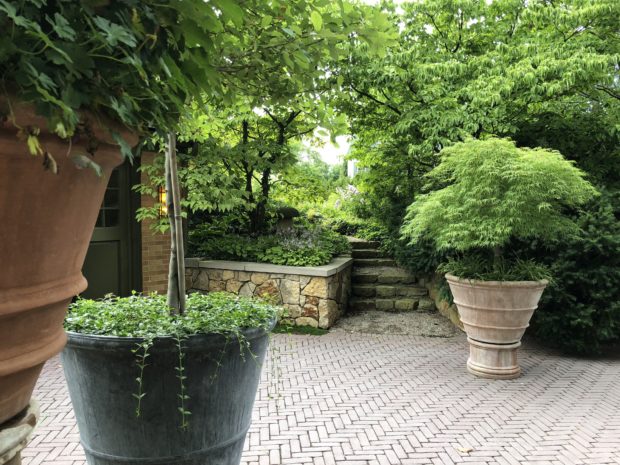 I planted trees, shrubs and perennials in my own pots last year. I was surprised at how much I enjoyed that. What will I do this year? I do not have a clue, yet.
I planted trees, shrubs and perennials in my own pots last year. I was surprised at how much I enjoyed that. What will I do this year? I do not have a clue, yet.
